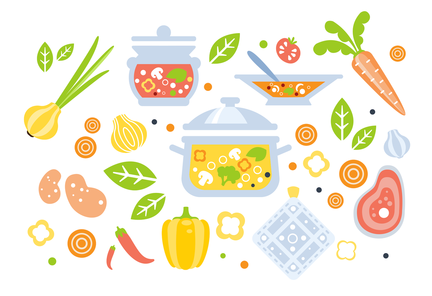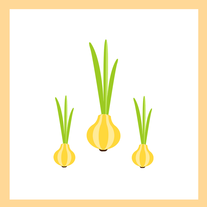|
Double Up Food Bucks can help you stretch your food budget, but there are plenty of ways to stretch it even further. We want to help you get the most out of your money! Let’s set the scene: You’ve just returned from the farmers market with a trove of fresh fruits and veggies for you and your family. You’ve sliced, diced, chopped, and cubed everything you need for your next healthy meal, but what happens to the excess? All that food prep has left you with an abundance of produce scraps and trimmings. Unless you have access to designated compost, you may have no option other than to throw them out. Waste your leftovers no longer! If you’re tossing out the odds and ends of your latest meal, you may as well throw out a few nickels and dimes while you’re at it. You can help both the environment and your wallet by learning some new ways to reuse excess vegetables and scraps. 1. Scraps for Stock Buying cartons of vegetable stock can be expensive, but making vegetable stock from leftover bits and pieces can save you money. Plus, less waste in the bin means less waste in landfills. This makes reusing veggie scraps a win for your wallet and a win for our environment. First, start by making a veggie scrap collection. If you aren’t using them right away, you can keep your vegetable leftovers in the freezer to keep them fresh. If you’re using Double Up Food Bucks to bring home twice your typical amount of fresh veggies from the farmers market, you’ll have a bag full of scraps in no time. Onions, carrots, and celery form the backbone of many veggie stocks, but don't stop there! Tons of other veggies can help to add flavor and color to a stock. Leeks, scallions, garlic, fennel, chard, lettuce, potatoes, parsnips, green beans, pea pods, zucchini and other squash, bell peppers, eggplant, mushroom stems, asparagus, corncobs, squash skins, and beet greens can be added to your mix. For spice, try tossing in some trimmings or stems from herbs like dill, thyme, parsley, cilantro and basil. When making your broth, watch out for strong scraps. Some vegetables tend to overpower your stock flavor-wise, so you may want to be careful when using Brussels sprouts, broccoli, cauliflower, turnips, rutabagas, and artichokes. Be sure to skip anything rotten or moldy. Once you have your vegetables ready, place 4 to 6 cups of scraps in a 5-quart pot. Cover the vegetables with water, bring it to a boil, and simmer for one hour. After about an hour, strain the broth and voila, fresh vegetable stock! 2. Herb Flavor Cubes Save yourself some flavor! Don’t swipe aside fresh herb trimmings as you are preparing a dish. Instead, place them into an ice cube tray, cover them with olive oil, and place them in the freezer. Preserving herbs in olive oil is a good way to reduce some of the browning that can occur when herbs are frozen. Herb preserves are also a great way to have spices ready immediately for winter stews, roasts, soups, and countless other dishes. Sautee some onions and garlic in this herb-infused oil, or add it to a pasta dish for a splash of fresh flavor. 3. Buy Now, Grow Later Can you imagine the cooking possibilities with an endless supply of fruits and veggies? Luckily, there is plenty of produce that you can double up on at home. Some herbs and veggies can be regrown just from their scraps. One of the easiest vegetables to grow at home is the green onion. In order to grow green onions, put a bunch of scallions with their roots into a glass filled with water and put the glass in a sunny spot around your home. Watch until green stalks appear and then you can begin to use them for any dish. Cut off what you need to use for cooking, and your green onions will regrow almost overnight. Eventually, you can place some of these shoots into soil and watch as they grow in abundance.
0 Comments
Leave a Reply. |
Double Up!Keep up with the latest news about Double Up AZ, and learn how Double Up is changing lives in Arizona! Archives
April 2019
Categories
All
|
Location |
|





